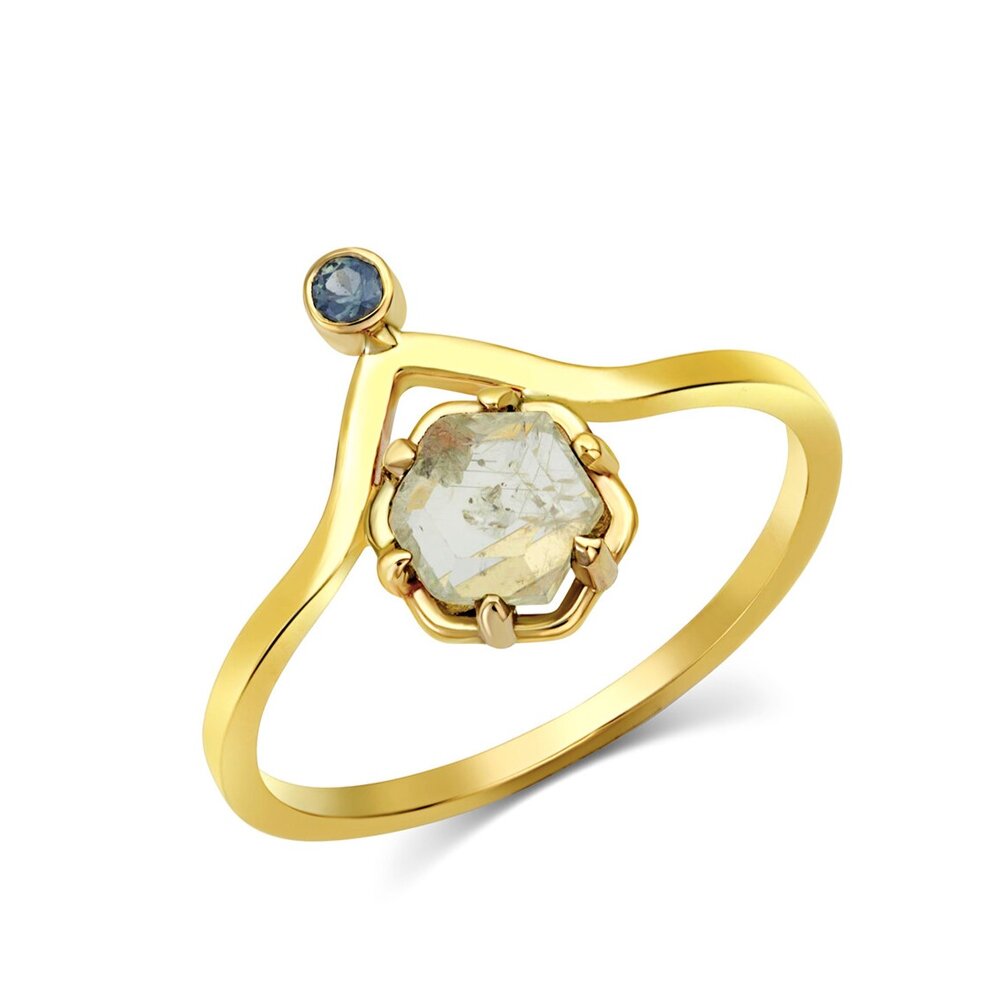Sapphires, are they an Ethical Choice?

With sapphire’s rising popularity, especially as an alternative to diamonds, you might be wondering about the stone’s ethical background. Ever since princess Diana chose her stunning 12 karat sapphire wedding ring, the magnificent blue gemstone has made a strong comeback in the jewelry industry. With the growing traction for sapphires and the more recently emerging sustainability and responsible sourcing trends, there has been more demand for ethical sapphires than ever before. But, where exactly do these gemstones come from? Who produces ethical sapphires? We’re here to explain it all.

Background
Before we dive into sapphires, it is important to understand why the ethical and sustainable movement hit the gemstone industry and why it is important today.
As you may know, diamonds rose in popularity rapidly around 1938 due to a marketing campaign for diamond engagement rings (remember “A Diamond is Forever”?). With this rapid rise in demand many companies sought out ways to decrease costs and raise profits. The term “blood diamond” first came into play during the bloody civil wars in Angola, Sierra Leone, Republic of the Congo, and Central African Republic, where diamonds mined under brutal conditions were being used to fund these conflicts. These inhumane practices gained more attention and lead to a public outcry for more transparent and ethical diamond mining and sourcing.
However, the slow changes in diamond regulations led some consumers to decide to search for more sustainable options to diamonds, including lab-grown diamonds (although their carbon footprint and economic impact compared to their mined counterparts is still a matter of debate), colored gemstones, and synthetic stones. This movement also helped bring more awareness to sapphires as an alternate choice for consumers who shied away from diamonds.

Ethical Sapphires
Sapphires have a distinct advantage that diamonds do not have and are in general more traceable than diamonds. Diamonds are difficult to trace back to their origin due to the many mines in existence and the routes they take around the world on their journey from a rough diamond through many hands and many steps until it becomes like the polished and faceted ones you often see in jewelry. This makes it almost impossible to know exactly where that diamond came from and while only an estimated 1-5% of diamonds in the supply chain actually fund wars and armed conflicts (making them true “blood diamonds”), you often still can’t be certain what conditions the stones were mined, transported, and cut under.
Sapphires, like many colored gemstones, on the other hand tend to come from small and independent family mines and therefore are easier to trace than diamonds. This means that with each sapphire purchase you likely support a local family and small business. Supporting these small mines and mining communities is crucial for stimulating their local economy.
It is also unpopular to create synthetic or lab created sapphires for jewelry, so any sapphire you buy is more likely natural. Natural sapphires can also cost less since many lower quality sapphires can be enhanced by heat treatments.
This doesn’t mean that all sapphires are ethical as there is always a risk, and we always have to do our due diligence, but it is definitely a step in the right direction. Who doesn’t like supporting small businesses instead of a handful of large multinational mining conglomerates?

Sapphire Sources
Some of the most popular sources for sapphires are Australia, Thailand, Sri Lanka and Madagascar. Sri Lanka is one preference of many looking for ethical sapphires because this is where the government has the most control over gemstone regulation. This site to also has a strong preference because the sapphires are mined by family owned businesses or small companies.
The reason there are many small operations is largely due to the fact that Sri Lanka favors small operations over large companies and automated machinery. GIA stated that “Mining licenses in Sri Lanka are regulated by the National Gem and Jewellery Authority (NGJA). Of the more than 6,500 licenses issued in 2013, more than 6,000 were for pit-mining operations using traditional methods. The remainder went to river and mechanized mining,” this means that the large companies are not competing with small mines.
More smaller mines mean less large scale mines that destroy and disrupt the land, surround communities, and fuel wars. With each license application miners must give a cash deposit. These deposits are returned when the mining is complete and the land has be restored. Any deposit fees left behind are used to rehabilitate the land.
Another sources that is preferred by jewelers is natural Montana mined sapphires. Sapphires from Montana are often not your traditionally mined gemstones. They are often collected from a river with little impact to the environment.
The reason the environmental impact is low is due to natural weathering processes. Unlike traditional mines where you have to dig deep to reach sapphire deposits, Montana relies on alluvial deposits. Alluvial deposits happen when a large portion of sapphire is exposed to weather processes that break up the stone. These smaller portions end up in rivers, streams, and lakes when it rains. Any one mining for sapphires or minerals must adhere to the strict Montana mining laws and guidelines. And to top it off, it supports local industry as many sapphires mined in Montana are also cut in the US, so they don’t have the same carbon footprint as stones that travel all around the world, from the mine, to the cutting facility, to the dealer, to the jeweler and then to you.
Sources:
https://www.thenaturalsapphirecompany.com/blog/ethical-jewelry-what-does-it-really-mean
https://www.gia.edu/gia-news-research-sri-lanka-mining-part1
https://www.greenlakejewelry.com/jewelryblog/natural-montana-sapphires-mine-to-market/





